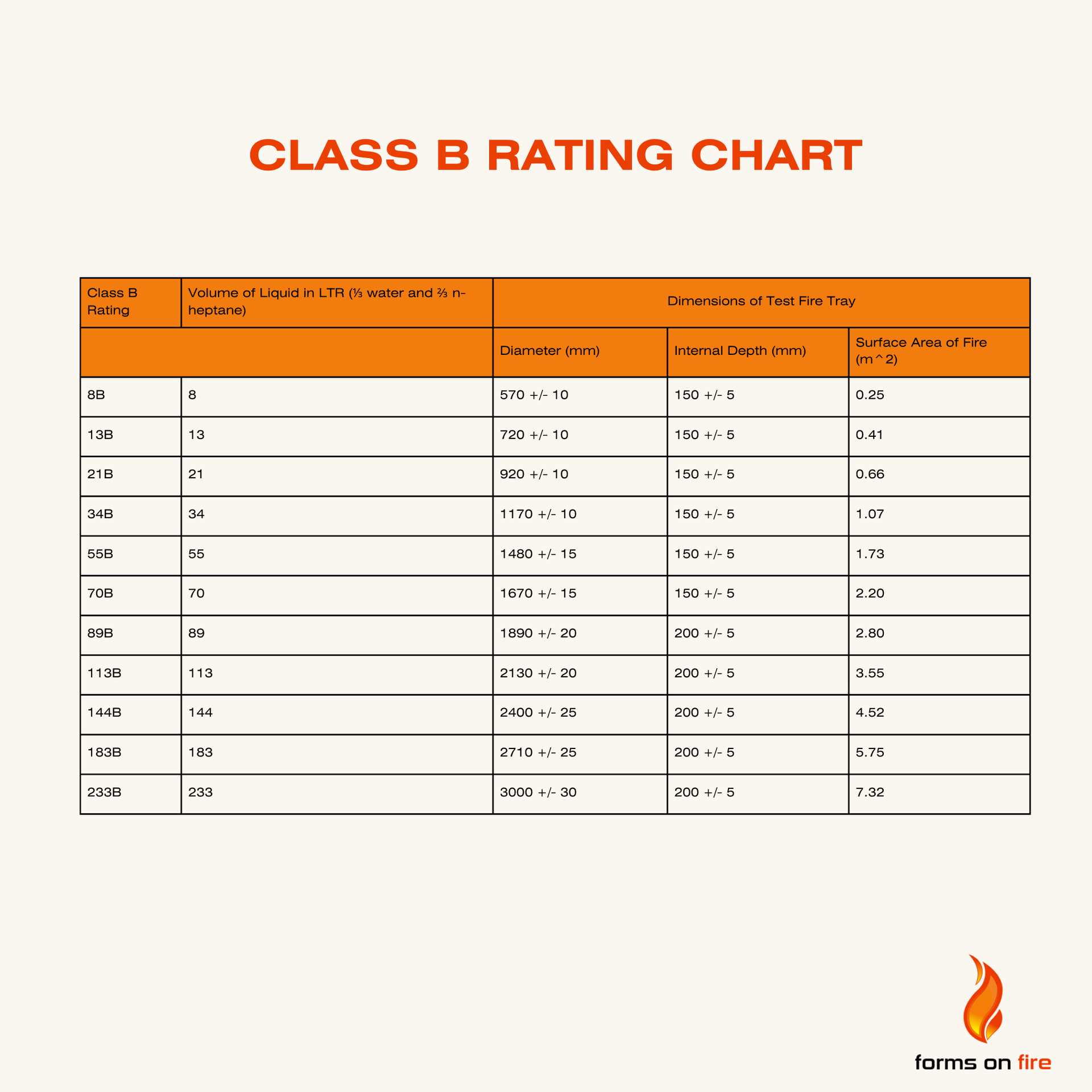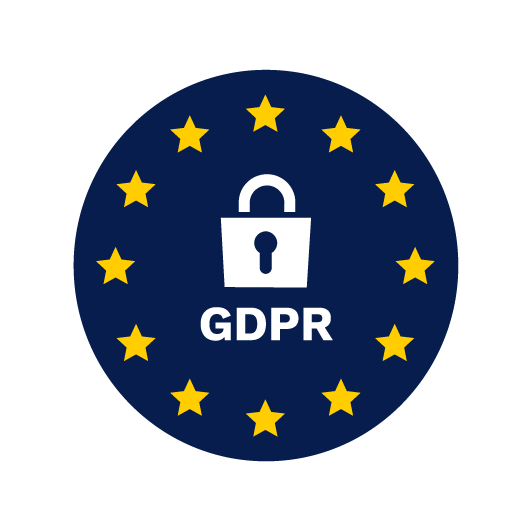Understanding the Fire Extinguisher Rating Chart
Fire extinguishers are your first line of defense against workplace fires. These essential safety tools have the potential to contain small, manageable fires before they escalate. However, not all fire extinguishers are created equal.
Use an extinguisher rated for the wrong class of fire, and your rescue attempt could end up exacerbating the fire, causing even more risk and damage. That is why we have fire extinguisher ratings.
This guide will break down the fire extinguisher rating chart, explaining how extinguishers are classified, what types of fires they are meant for, and how to choose the types of fire extinguishers to protect your organization’s employees, assets, and compliance.
What Do Fire Extinguisher Ratings Mean?
The fire extinguisher rating system classifies extinguishers according to the types of fires they are able to extinguish. The ratings are decided based on fire testing under UL 711 standards. UL, short for Underwriters Laboratories, is an organization that applies science to challenges in safety, security, and sustainability. Their work encompasses independent research, standards development, testing, and certification.
UL 711 uses a combination of letters and numbers to indicate the types of fire extinguishers.
The letters indicate the type of fire the extinguisher can handle, and
the numbers indicate the extinguisher’s effectiveness or extinguishing potential for that type of fire.
Class A Fires
Class A fires involve ordinary combustible materials like wood, paper, cloth, rubber, and certain plastics. These are some of the most common fires in homes and non-residential buildings due to the prevalence of paper, furniture, and other combustible materials. Because of this, fire extinguishers in this class are commonly found in homes, apartments, schools, office spaces, warehouses, and retail stores. The primary chemical in Class A fire extinguishers is monoammonium phosphate, due to its ability to smother fires fueled by these materials.
Extinguishers for Class A fires are rated numerically, with numbers ranging from 1-A to 40-A. The number indicates how much fire the extinguisher can put out.
For example, a 3-A extinguisher can handle a fire made of 144 wooden pieces (1½” x 1½” x 29”). You can think of the number as a size rating, with each unit being 1 ¼ gallons of water. For example, a 2A fire extinguisher is as effective as 2 ½ gallons of water, whereas a 4A is equivalent to 5 gallons of water.
Class B Fires
Class B fires involve flammable liquids and gasses, including gasoline, oil, alcohol, kerosene, paint, and solvents. Any establishment that handles flammable liquids or gasses on a regular basis should keep Class B fire extinguishers on hand. That includes businesses like auto repair shops, chemical plants, and even restaurants. Class B fire extinguishers use both monoammonium phosphate and sodium bicarbonate. The monoammonium phosphate smothers the fire, then the sodium bicarbonate triggers the chemical reaction that extinguishes it.
Class B extinguishers have numerical ratings that indicate the square footage of a fire they can extinguish. For instance, a 10-B extinguisher can put out a fire involving 31 gallons of heptane spread over 25 square feet.
Class C Fires
Class C fires typically involve live electrical equipment like computers, machinery, and wiring. This type of fire extinguisher is essential for all organizations facing electrical hazards, such as offices, IT departments, and manufacturing facilities.
Unlike Class A and B extinguishers, Class C ratings have no numerical component. Instead, the extinguisher is tested for non-conductivity to confirm it can be used safely on energized equipment without the risk of electrical shock. Because monoammonium phosphate and sodium bicarbonate have nonconductive properties, they are both commonly used in Class C fire extinguishers.
Class D Fires
Class D fires involve combustible metal materials like magnesium, sodium, potassium, and titanium. This type of extinguisher is vital for specialized manufacturing and/or industrial facilities that work with metal shavings and/or powders.
Class D fire extinguishers don’t have numerical ratings either. Instead, their effectiveness is dependent on the amount and method of agent application to control the fire.
Class K Fires
Class K fires involve cooking oils and fats. This type of fire is most common in a kitchen, making Class K extinguishers essential for restaurants, cafeterias, food processing plants, and any other organization that may need to handle a cooking-related grease fire.
Because they are only tested on one fire source, Class K extinguishers don’t have numerical ratings. Instead, they are rated based on the size of the deep fat fryer fire they can extinguish without splashing or reignition.
Combination Ratings: ABC Extinguishers
Many fire extinguishers are rated for more than one type of fire. The most common example of this is the ABC extinguisher. Rated for all three classes, these versatile fire extinguishers are equipped to handle ordinary combustibles, flammable liquids, and electrical fires. They are common in conventional residential buildings and businesses due to their convenience.
Businesses should use caution when selecting multi-use fire extinguishers. Only do so when you’re absolutely certain the combination extinguisher is suited for all of your workplace’s fire hazards.
Choosing the Right Types of Fire Extinguishers for Your Business
Choosing the right fire extinguisher for your business starts with assessing the potential fire hazards in your workplace. Examine your facility, outlining all the materials you work with, as well as the equipment you use: Do you store flammable liquids? Handle electrical equipment? Have a kitchen area?
Identify the appropriate fire extinguisher for each fire risk. If all of your fire risks fall into Classes A, B, and C only, then you can use an ABC extinguisher. If your workplace is at risk for fires in Classes D and K, then you’ll need additional extinguishers for each class.
Once you’re clear on all the relevant fire hazards, take a look at the regulations you’re required to comply with. Familiarize yourself with
fire safety codes like NFPA 10, which outlines the standards for portable fire extinguishers. You may find that while your fire risks fall within Classes A, B, and C, regulations require you to have Class D and K extinguishers on hand regardless.
After acquiring the appropriate fire extinguishers,
schedule regular inspections to ensure they are appropriately rated, easily accessible, and properly maintained. Because improper use can spread fire or cause injury, only trained employees should use the extinguishers. Train your team on how to use every type of fire extinguisher necessary for your workplace.
Using the Fire Extinguisher Rating Chart
The fire extinguisher rating chart is a helpful tool that consolidates the basics of fire classes, hazards, and the appropriate ratings for each. It’s designed so that you can quickly match the fire risk to the right type of fire extinguisher at a glance. Here’s a simplified breakdown:
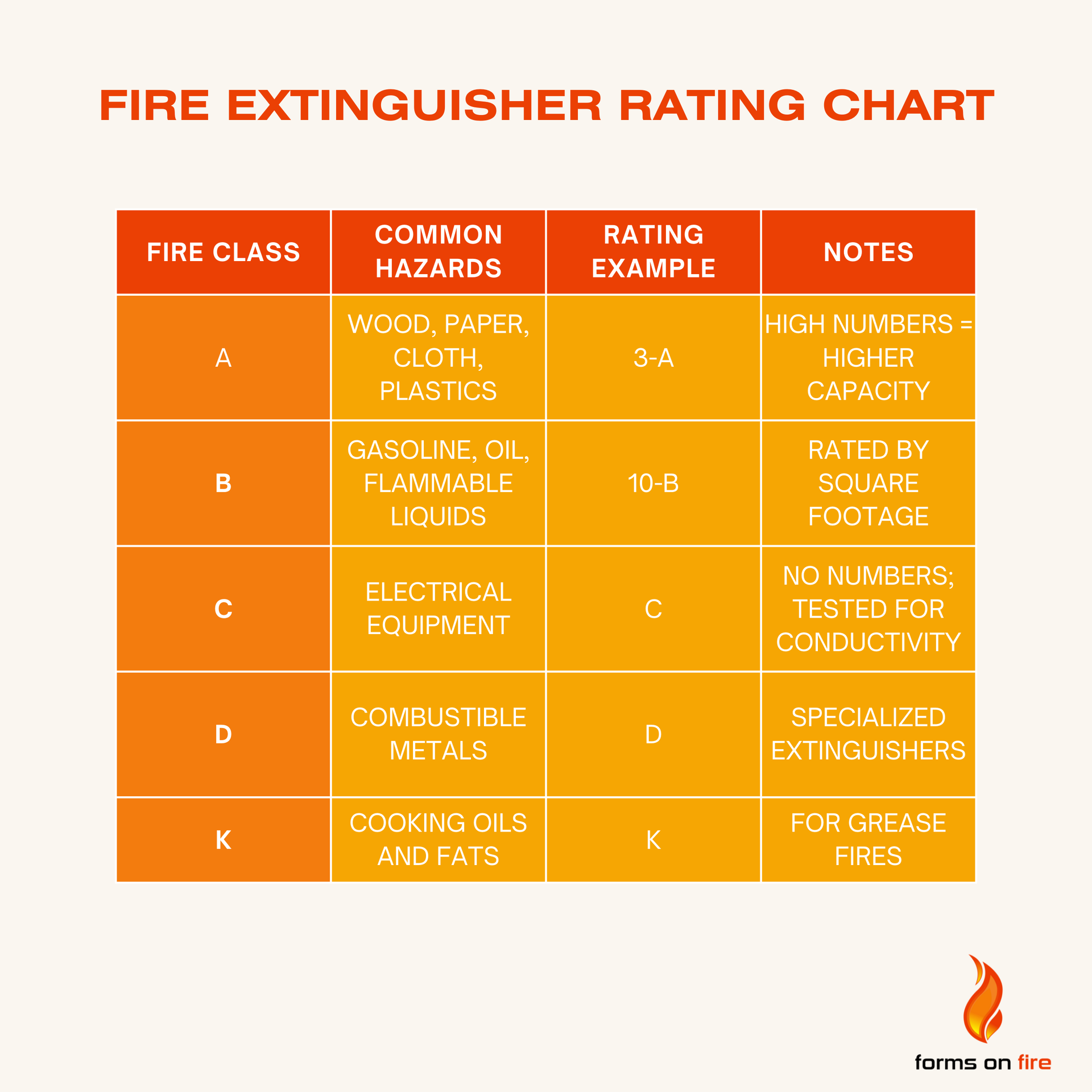
There are also charts outlining the ratings within a single class.
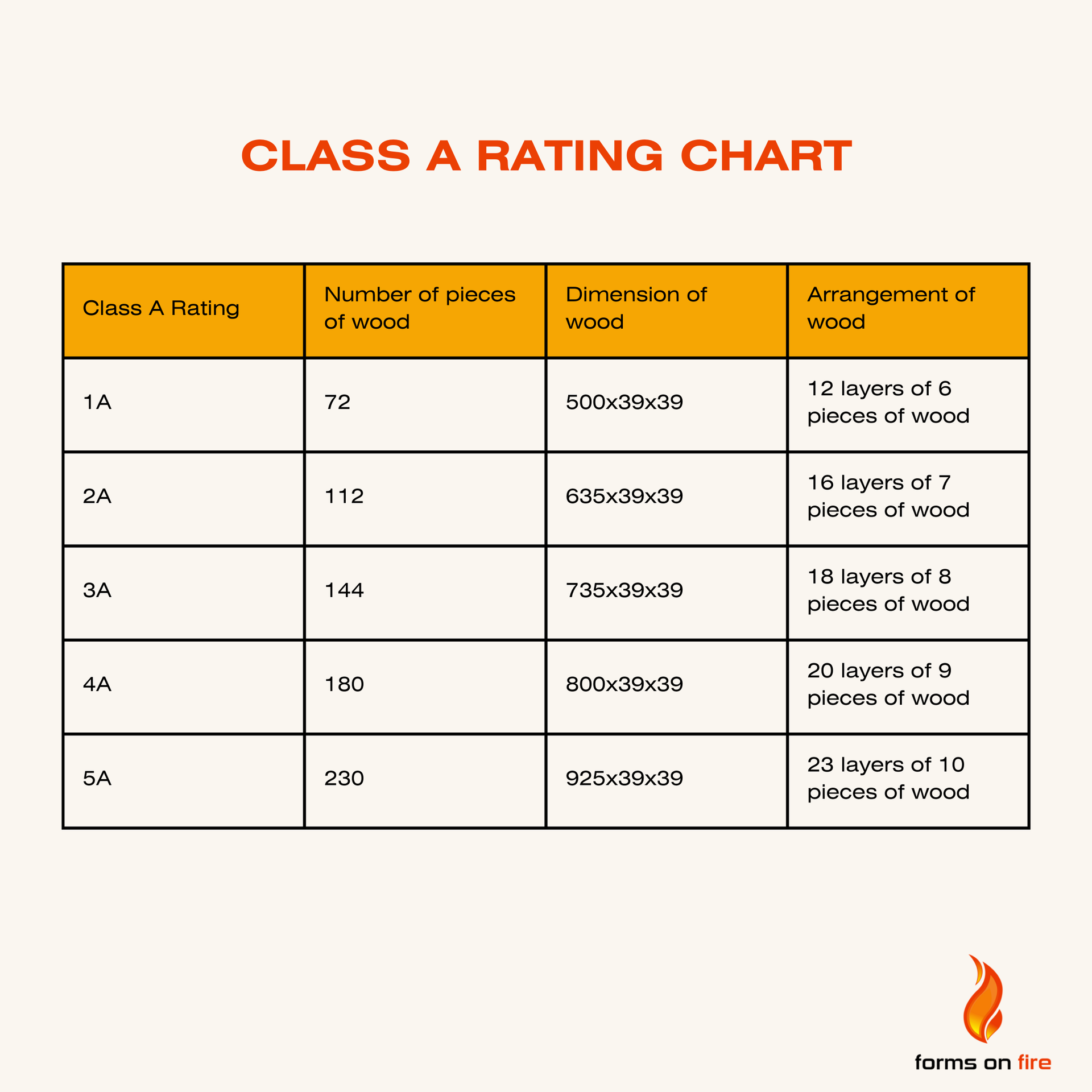
Enhancing Fire Safety with Technology
Familiarizing yourself with the fire extinguisher rating chart is important for fire prevention and compliance, but the benefit doesn’t stop there. The ability to quickly decipher which fire extinguisher to use in an emergency can save your life.
Most workplaces will require more than one type of fire extinguisher. The variation in training, maintenance, and inspection requirements can become a hassle if not properly managed.
That’s where Forms on Fire can help. Switching from a paper or spreadsheet-based fire safety system to a robust fire inspection software like Forms on Fire simplifies the entire fire safety process. Identify fire hazards and perform fire extinguisher inspections with custom checklists, assign automatic notifications to remind you when it’s time to service each fire extinguisher, and organize all of your maintenance and inspection records in a centralized, cloud-based system.
Want to give it a try? Start your
free trial today.

